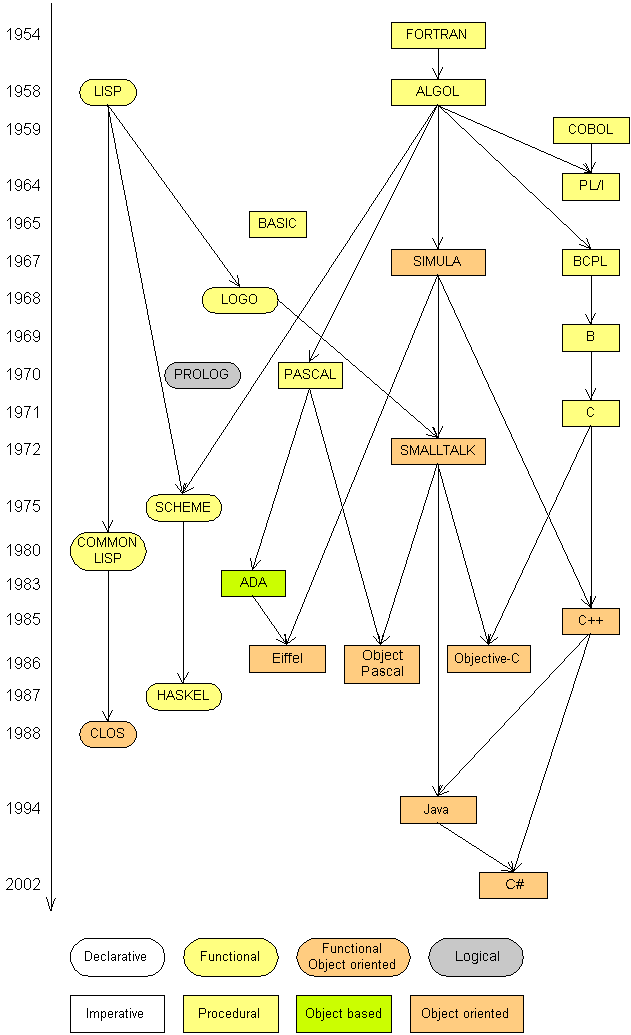




This is in fact the only language that a computer (or beter said a processor) understands and can execute (directly into the hardware). Machine language exists solely out of the binary symbols 0 and 1 and is thus inappropriate for use by humans. Every computer program written in any programming language must be converted to machine language by either a compiler or an interpreter. Furthermore, machine language depends on the processor and is thus not portable in any way.
To ease programming, a mnemonic representation of machine language was introduced. This makes assembler very low-level, dependent on the processor and incredible fast.
| Meaning | FORmula TRANslation |
| Development |
|
| Comments |
|
| Meaning | LISt Processing |
| Development | 1958 |
| Comments |
|
| Meaning | COmmon Business Oriented Language |
| Development |
|
| Comments |
|
| Meaning | Programming Language I |
| Development | +/- 1964 |
| Comments |
|
| Meaning | ALGOrithmical Language |
| Development |
|
| Comments |
|
| Meaning | Beginners All-purpose Symbolic Instruction Code |
| Development |
|
| Comments |
|
| Meaning | SIMULAtion |
| Development |
|
| Comments |
|
| Meaning | ? |
| Development |
|
| Comments | "A versatile computer language that provides a friendly introduction to programming, a serious tool for advanced programmers and a medium for educational discovery" (Seymour Papert) |
| Meaning | PROgramming in LOGic |
| Development |
|
| Comments |
|
| Meaning | Named after Pascal Blaise who build the first mechanical calculation device (which could only add and subtract) |
| Development |
|
| Comments |
|
| Meaning | The kernel of the language was deliberately kept small. |
| Development |
|
| Comments |
|
| Meaning | Successor to B |
| Development |
|
| Comments |
|
| Development |
|
| Comments | Scheme is a statically scoped and properly tail-recursive dialect of the Lisp programming language. It was designed to have an exceptionally clear and simple semantics and few different ways to form expressions. A wide variety of programming paradigms, including imperative, functional, and message passing styles, find convenient expression in Scheme |
| Development | 1980 |
| Comments | Standardize the many dialects of Lisp. |
| Meaning |
|
| Development |
|
| Comments |
|
| Meaning | C++ means C + 1 in the C-language itself (coined by Rick Mascitti) |
| Development |
|
| Comments |
|
| Development |
|
| Comments |
|
| Development |
|
| Comments |
|
| Development |
|
| Comments |
|
| Meaning | Named after the mathematician Haskell Curry who developed the formal foundation of functional programming languages. |
| Development | 1987 |
| Comments | The goal was to create a standardized functional programming language with lazy evalution. In 2002, Haskell is the functional language on which most research is being performed. |
| Meaning | Common Lisp Object System |
| Development |
|
| Comments |
|
| Meaning |
|
| Development |
|
| Comments |
|
![]()
![]()
|
Andy Verkeyn's Website, © Andy Verkeyn 1997-2015 Last webpage revision: |